Jeju Island Travel Attractions
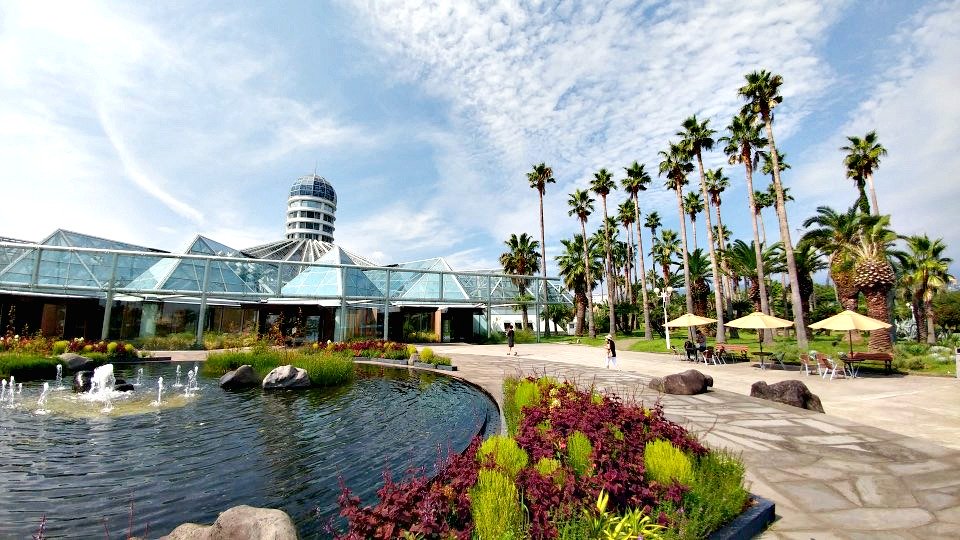 Front view of Yeomiji Botanical Garden on Jeju Island
Front view of Yeomiji Botanical Garden on Jeju Island Jeju Island Travel Attractions
Jeju Island is an island in the Jeju Province of South Korea. It is one of the most popular destinations for holidays in the country due to its beautiful land and seascapes.
I am one of those who lovest to explore again and again the island from time to time and enjoy its beaches, seafood, hiking paths, sights, arts, and various holiday facilities.
Brief Introduction
Jeju Island lies in the Korea Strait, which is in the south of Southern Jeolla Province. If you decide to take a boat, it is in the Jeolla area (especially Mokpo City) where you can ideally embark.
Jeju or Cheju Island holds the world heritage site called the Jeju Volcanic Island and Lava Tubes. Such incredible heritage is brought about by the tallest mountain in the republic named Hallasan (Mountain).
The Hallasan Mountain is sitting at the heart of the island. Its imposing stature is inviting hikers to hike its trails crisscrossing all around its slopes.
Jeju has a temperate climate. Even though the whole country enjoys the winter season, Jeju's temperature does not go even to zero degrees Centigrade.
Now, let me introduce the exciting parks that you can explore when you have the luxury of time.
Most of these exciting places are natural environments and human-made parks and entertainment facilities.
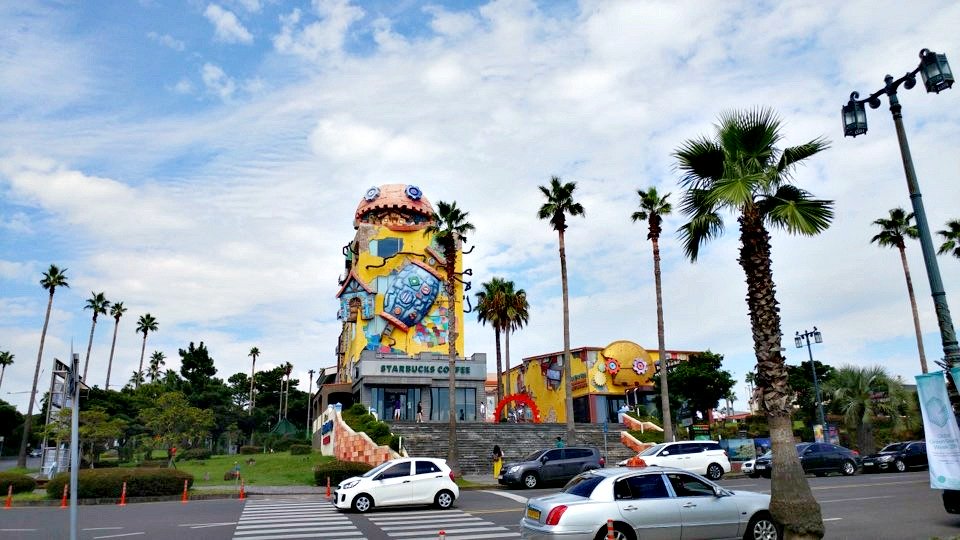 Amusement Park area on Jeju Island
Amusement Park area on Jeju IslandJeju Island Travel Attractions
Let me start with Jeju's famous beaches...
Jeju Beaches
- Sehwa Beach,
- Woljeongri Beach,
- Geumneung Eutteum Beach,
- Hamdeok Beach,
- Hyeopjae Beach,
- Gimnyeong Seongseji Beach,
- Iho Tewoo Beach,
- Gwakji Gwamul Beach,
- Samyang Black Sand Beach,
- Sanho Beach
If you have already noticed, Jeju Island is a volcanic island. Therefore, you could obviously see them around, especially around the coastal areas and beach resorts being represented by the black rocks (solidified lava).
Below are the famous sites and areas where you can enjoy volcanic rock formations formed thousands of years ago.
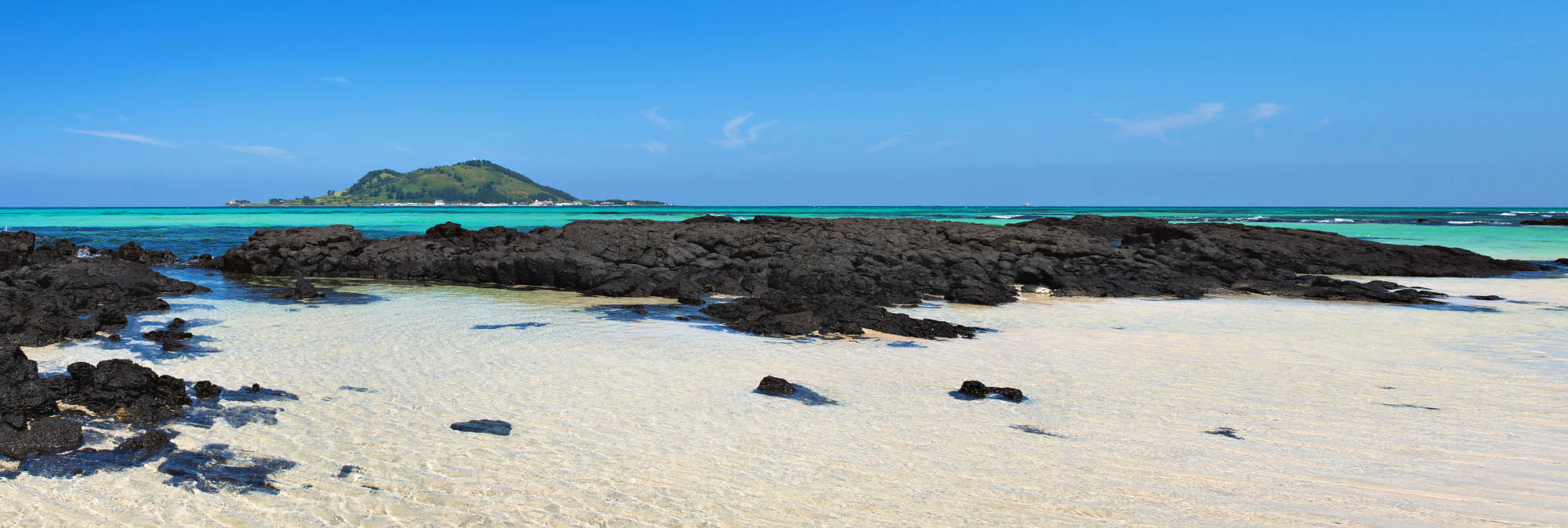 A panorama of Jeju Island's beach
A panorama of Jeju Island's beach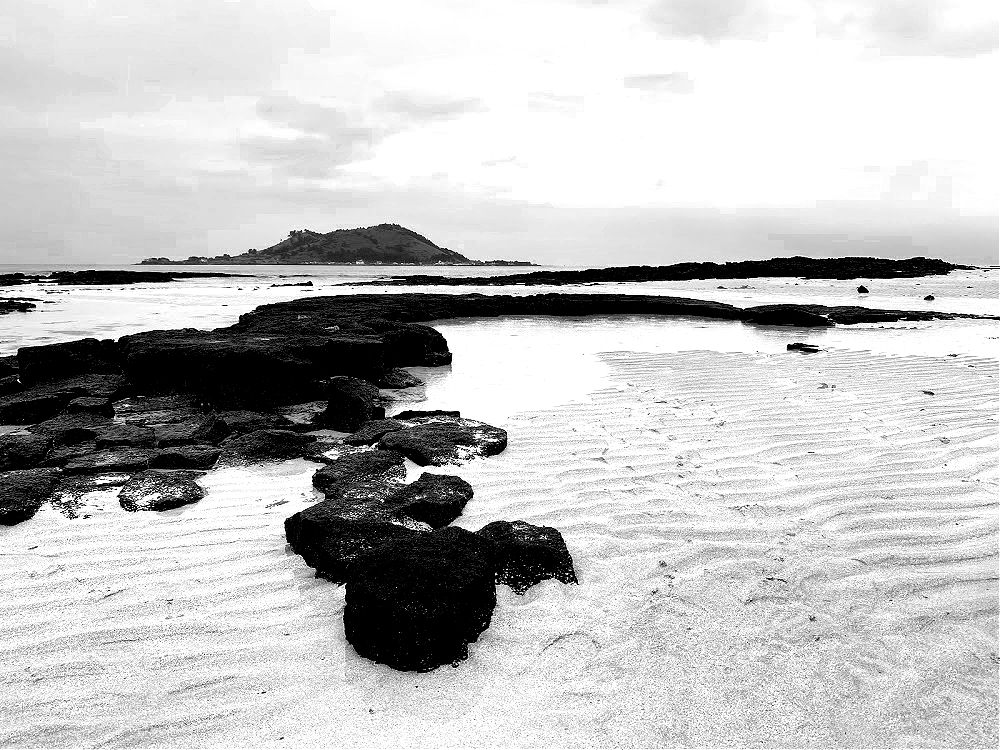 Volcanic rocks at Geumneung Eutteum Beach area, Jeju Island
Volcanic rocks at Geumneung Eutteum Beach area, Jeju IslandJeju Volcanic Sites
Yongnuni Oreum Volcano Cone, Geumak Oreum Volcanic Cone, Jeongmul Oleum, Sarabong Volcanic Cone, Darangswi Oreum Volcanic Cone, Abu Oleum
Now, coming out from the coastal areas or beaches, you may explore some inner stretches of the island. You can enjoy Jeju's numerous green parks and artistic parks.
They are mostly available to the public for outing and other healthy activities during regular days and holiday seasons.
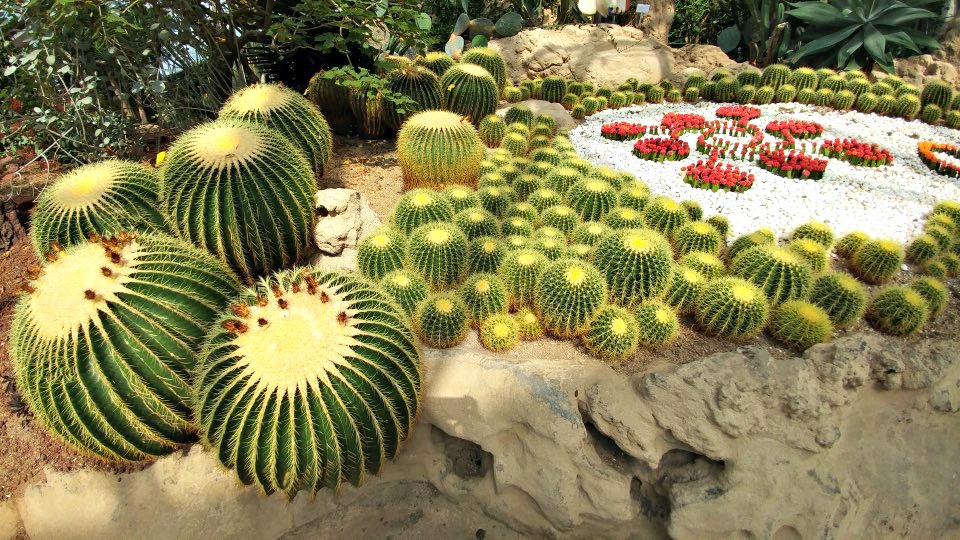 Cacti grow at Jeju's Yeomiji Botanical Garden
Cacti grow at Jeju's Yeomiji Botanical GardenJeju Island Parks
Spirited Garden, Bijarim Forest, Jeju Stone Park, Jeju April 3rd Peace Park, Udo Island Lighthouse Park, Sarabong Park, Dolharbang Park, Sammu Park, Geumsan Gongwon
Hallasan National Park
Jeolmul Natural Forest Park
Udo (Island), Hallim Park
Manjanggul Cave, Sangumburi Crater
Hallasan Seongpanak, Jeju Kimnyoung Maze Park
Halla Arboretum, Yongduam Rock
Saryeoni Forest Path, Handam Park
Jeju Light Garden, Let's Run Park
Jeju Flower & Bird Park Falconry Centre
Loveland Park, Seongsan Ilchul-bong (Sunrise Peak)
Jusangjeolli Cliffs, Jeju Haenyeo Museum
Jeju Waterworld, Seonimgyo Bridge
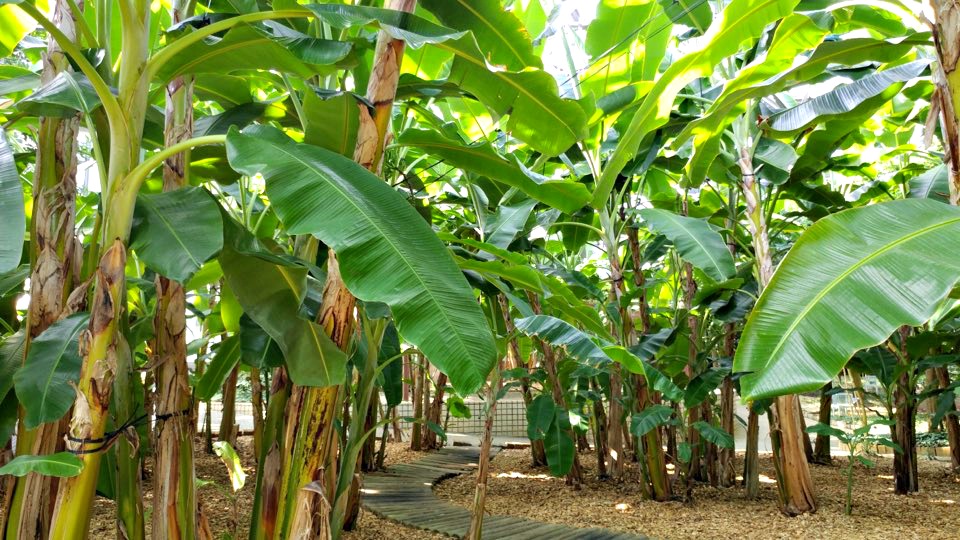 Bananas are also grown on the island
Bananas are also grown on the islandSeogwipo City Attractions
Seogwipo City is on the Southern side of Jeju Special Self-governing Province of the Republic of Korea. Seogwipo is famous for its natural landscape--stunning views of Hallasan Mountain and the lava rock walls along the coastlines.
Travelers and visitors alike can also enjoy various sightseeing facilities, including boats and mini-submarines that will bring you to the island's fecund sea life and offshore island and their respective serene atmospheres.
Teddy Bear Museum, Hello Kitty Island, Alive Museum, Ripley's Believe It or Not! Museum, Jungmun Saekdal Beach, Cheonjeyeon Falls
Seongsan Ilchulbong Tuff Cone, Lee Jung Seop Street, Yakchunsa Temple, Sopjikogi, Soesokkak Estuary, Play K-pop Museum, Jeju Folk Village
Seonimgyo Bridge, Jeju Pacific Land, Donneko, Hallasan National Park, Daepo Jusangjeolli Cliff, 1100 Highland Wetland, Sanbangsan Mountain
Cheonjiyeon Falls, Dragon Head Rock, Oedolgae Rock, Jeju International Convention Center, Chocolate Museum, Seogwipo Sakura Road
Sangumburi Crater, Eco Land Theme Park, Sanbangsan Tansanhot Hot Spring, Jeju Herb Dongsan, Sanbanggulsa Cave Temple, Gwaneumjungsa Temple
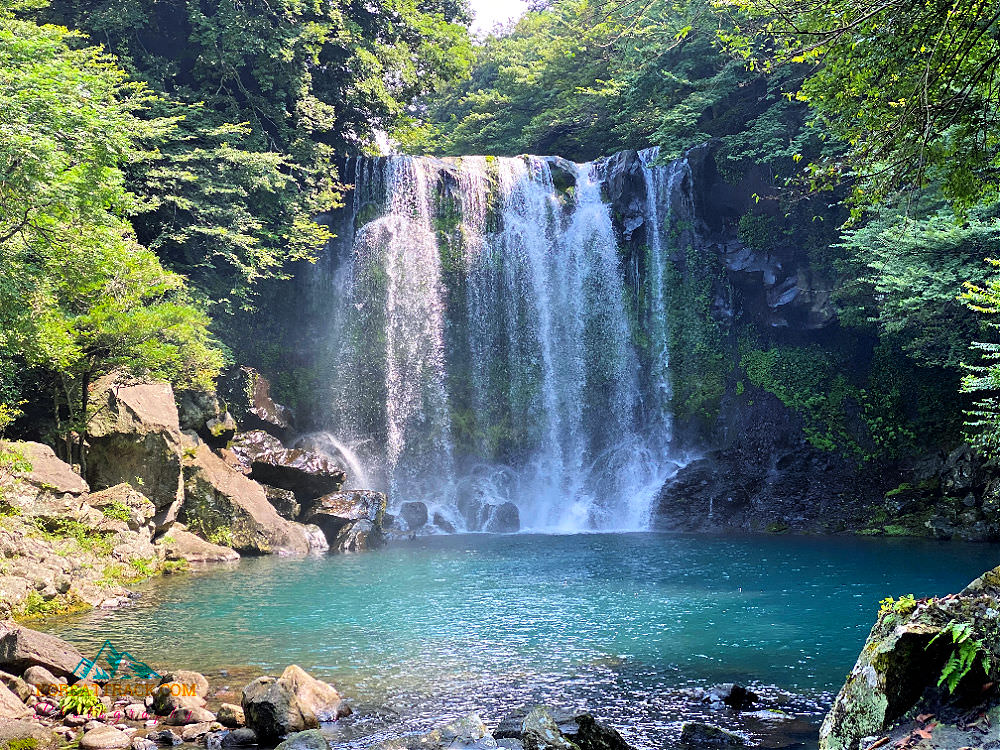 The second level of Cheonjeyeon Falls on Jeju Island
The second level of Cheonjeyeon Falls on Jeju Island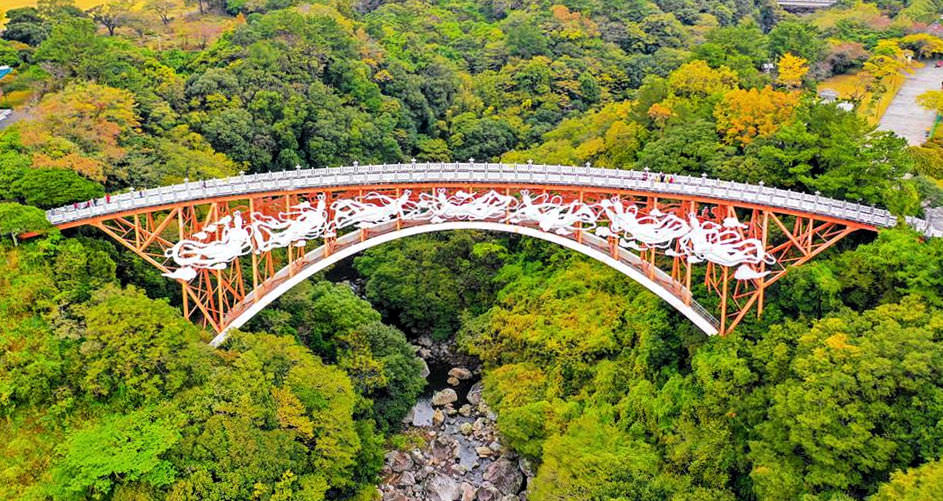 Seonimgyo Bridge or "Seven Fairies Bridge"
Seonimgyo Bridge or "Seven Fairies Bridge"Many Names of Jeju Island
Koreans called Jeju Island by many names in the past. The mysterious names given depend on people's experiences and views of this isolated but unique island.
Some examples of such names were...
"Doi" - literally means 'barbarian island'
"Junweonhado" - means southern part of the peninsula
"Taekseungnido" - means the peaceful but hot island in the Joseon period
"Samdado" - means the "Island of Three Abundances"
The other names were Juho, Tammora, Seomna, Tangna, and Quelpart Island.
The name Quelpaert was the name known to the European explorers. Quelpaert was the name of the European ship that first spotted the island on its way to Japan from Taiwan.
Japan also named Jeju as Saishu during the occupation period. Another one was "Fungma Island," which seemed to be the name created by a missionary in China.
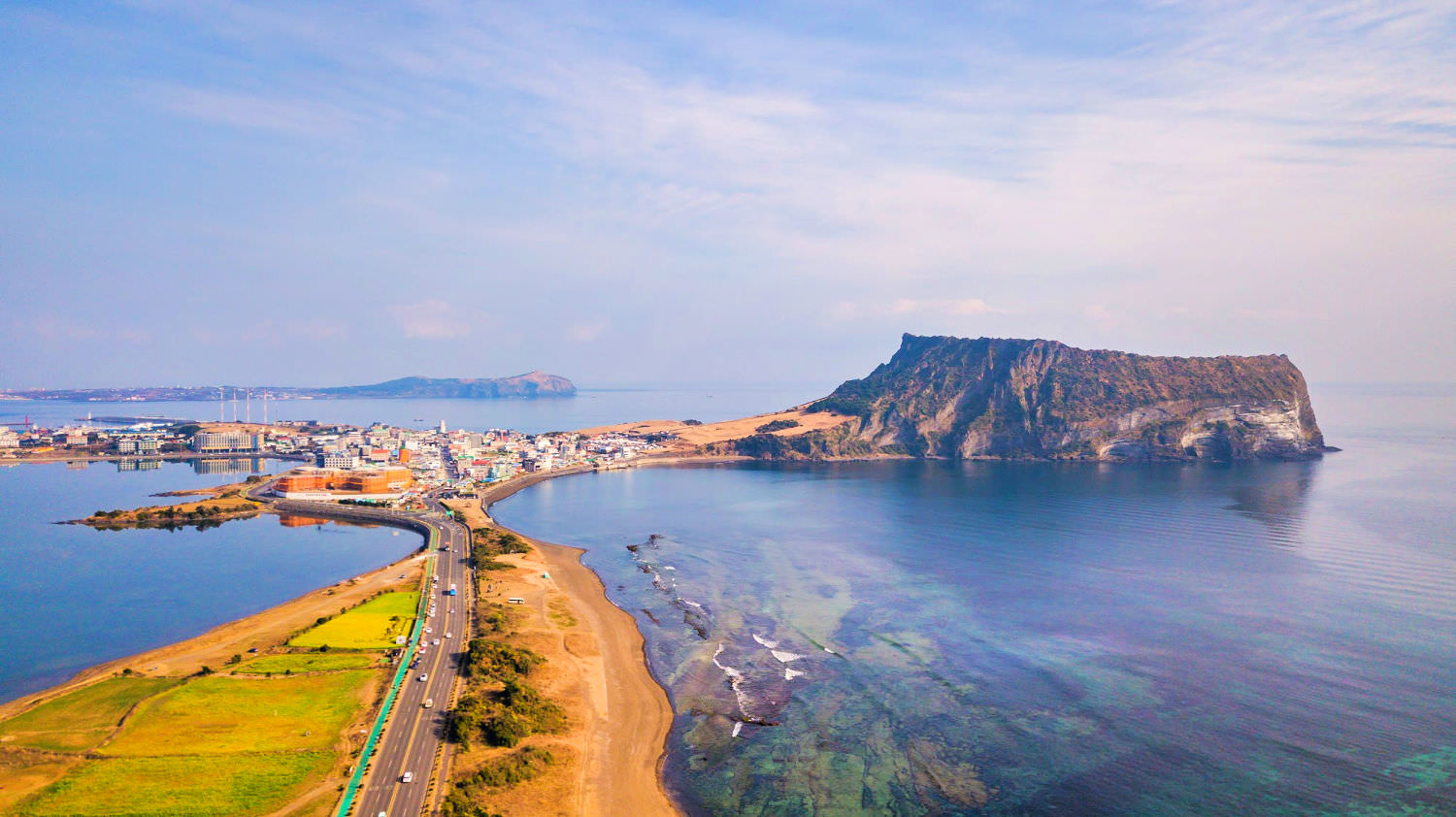 Ilchulbong or Sunrise Peak
Ilchulbong or Sunrise PeakBeginnings of Jeju's Tourism
The self-governing system of Jeju Government has been pushing and promoting the island for many years now. As mentioned above, Jeju has exciting natural and topographical features that can captivate any visitor's desires.
In fact, Jeju Island has been since dubbed as the "Little Hawaii" of South Korea. It can be true as both "islands" (recognizing that Hawaii is a state) have volcanoes and beaches and with almost similar tropical temperatures.
In the early 1960s, the Korean government established an entity that could manage tourism activities on the island called the Korean National Tourism Organization (KNTO).
![Cheonjiyeong Falls [청지연폭포] cheonjiyeon-falls](https://www.koreattrack.com/images/xcheonjiyeon-falls.jpg.pagespeed.ic.1cUoh3CNbI.jpg) Cheonjiyeon Falls [천지연 폭포]
Cheonjiyeon Falls [천지연 폭포]Traditional Livelihood Among Jeju People
If you have been to the island, you should have noticed that farming is the traditional livelihood among locals.
Such a feature can be noticed through a shoulder-high stone (volcanic rocks) walls that divide each farmers' farms. The wall also serves as protection from strong winds that could damage crops from growing upright.
But the other most fascinating livelihood, which is, unfortunately, dying nowadays, is the seafood diving. What is interesting is that it is fundamentally a work and a skill demonstrated by Jeju women only.
These divers are popularly known as 'Haenyo,' which means a 'female sea diver' in the Korean language. I said 'dying' livelihood due to the dwindling interest among Jeju women to engage in this traditional kind of activity.
The Haenyeo dives to catch oysters, clams, abalone, seaweeds, and other edible seafood either for personal consumption or for selling at the market. They only wear diving suits and masks without using oxygen tanks.
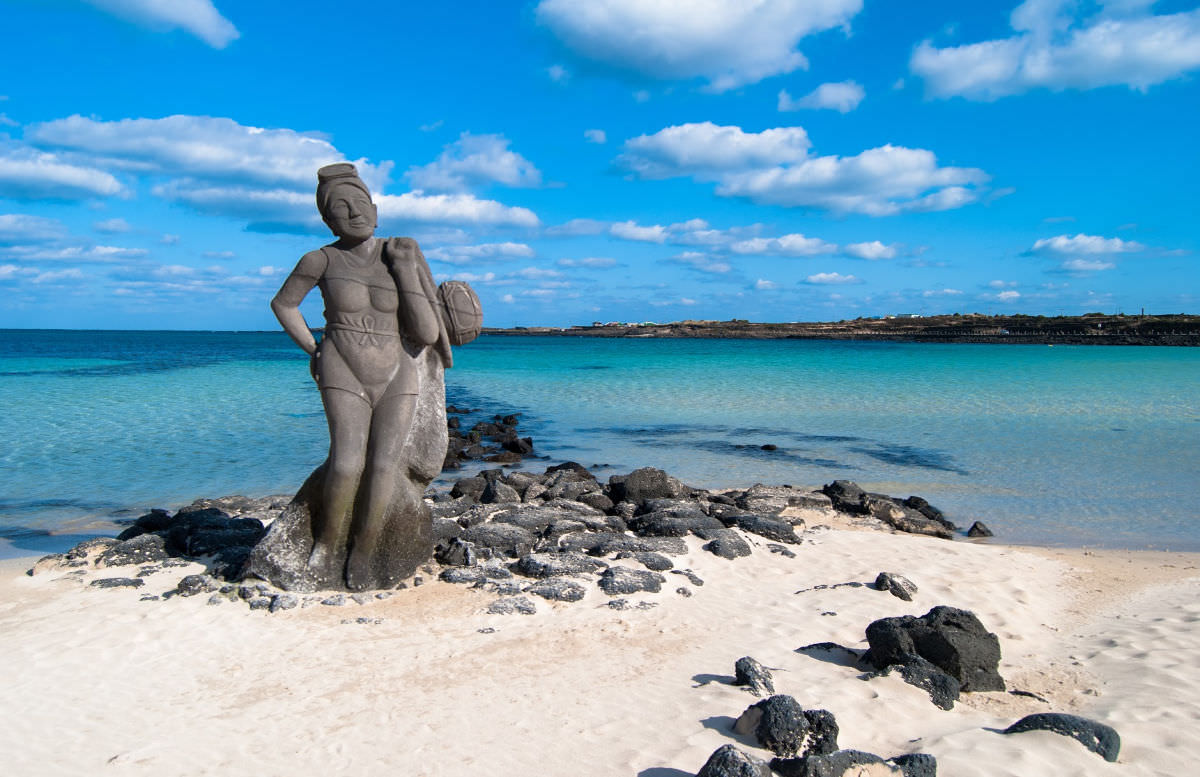 Stone statue of Jeju Island's 'haenyo' or women diver
Stone statue of Jeju Island's 'haenyo' or women diverGetting to Jeju Island Attractions
One can quickly get to the island by taking an airplane locally and internationally.
Locally, take an airplane from Gimpo Airport (in Seoul) that directly flies to Jeju many times a day all year round. Also, you can get there through the airports in Daegu City, Busan City, Gunsan, and Gwangju City.
Internationally, you can directly fly to the island's Jeju International Airport from select airlines.
Ferries from the mainland also travel to Jeju, such as those from Busan City, Mokpo City, and other ports in the country.
Locally, you can take any public transports available. Both buses and taxis are available to reach to destinations comfortably.
Cars, motorbikes, bicycles are also available for rent at various outlets and offices.
I hope this is useful as your starting point for your Jeju Island attractions travel and explorations.
- Home
- Jeju Island Attractions
Get Exciting Activities
Book one of our exciting activities today to experience the thrill of a lifetime! Take advantage of this opportunity and secure your spot in advance.
Hotel Map Guide
Find your affordable, accessible, and comfortable hotel in Seoul at Agoda.Com. See the hotel map below...
Hotel Booking Guide
Find affordable and amazing hotels on Agoda.com using the search box below. Book now to enjoy great discounts and save!







New! Comments
What do you think about this page? Leave me a comment in the box below.